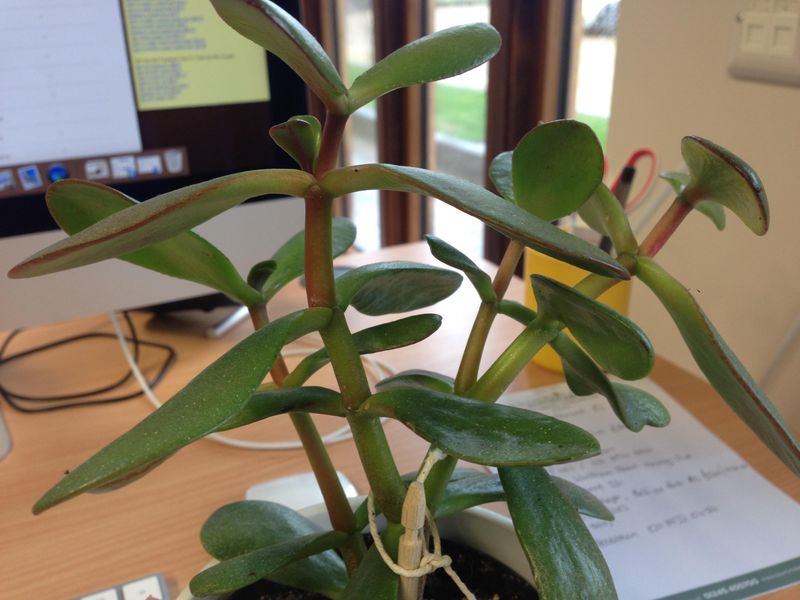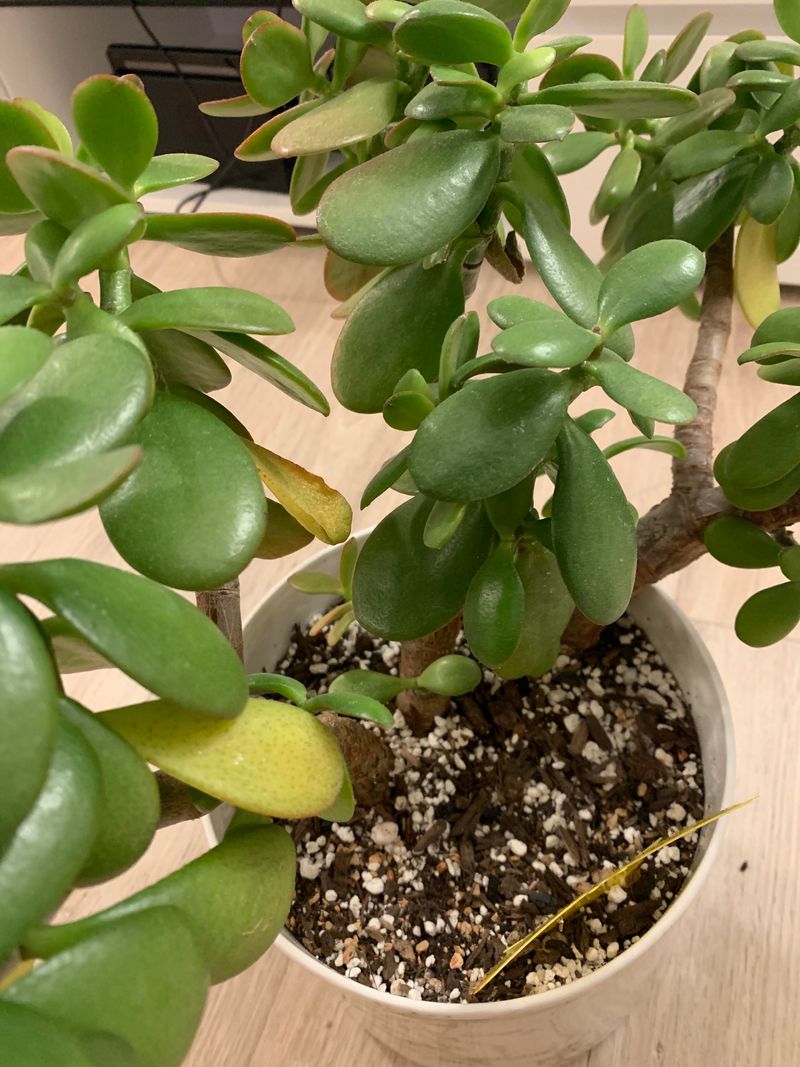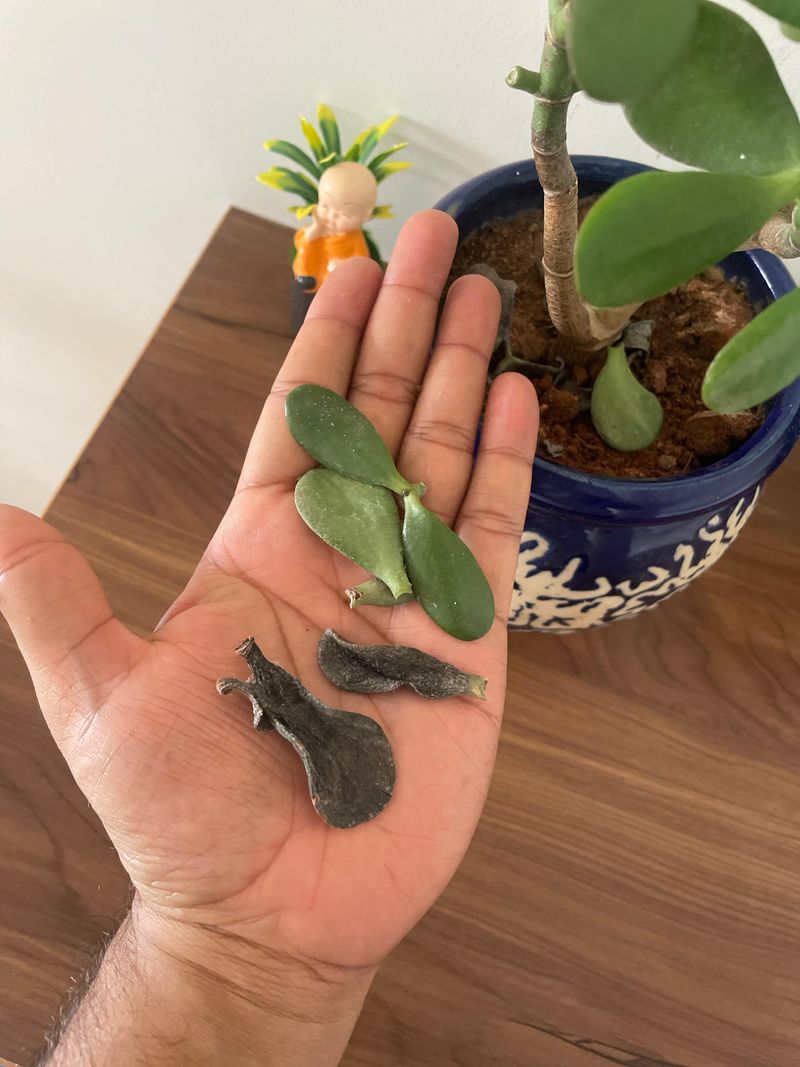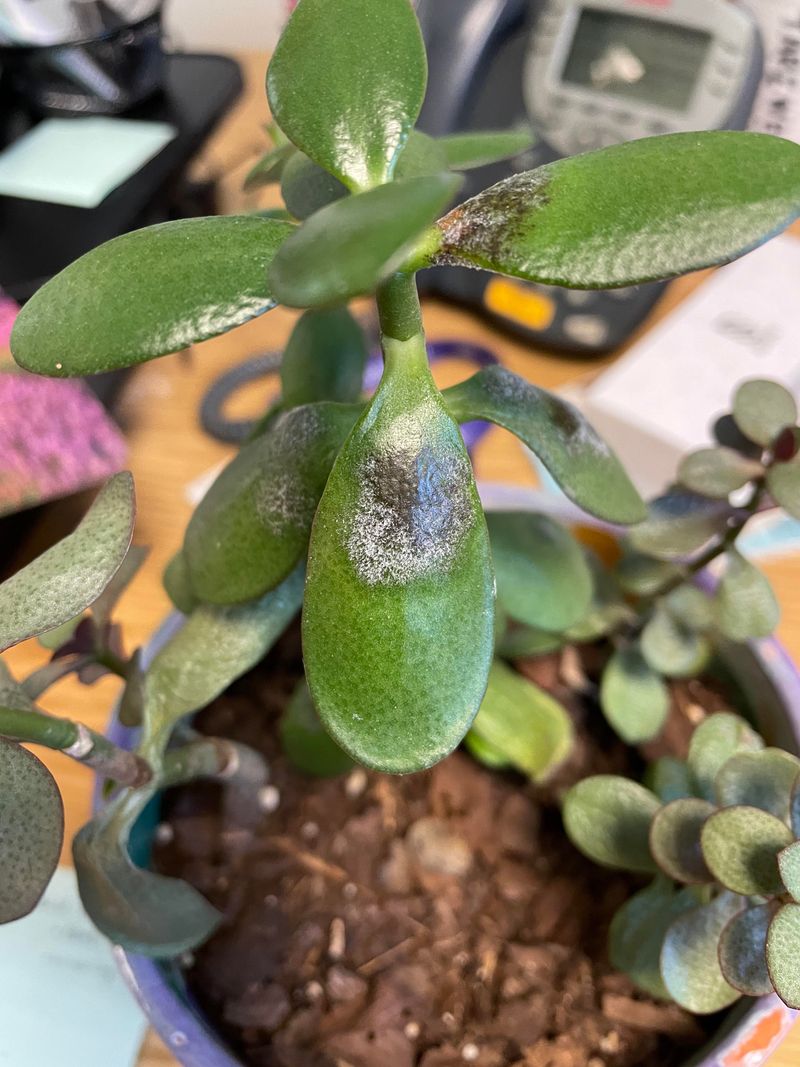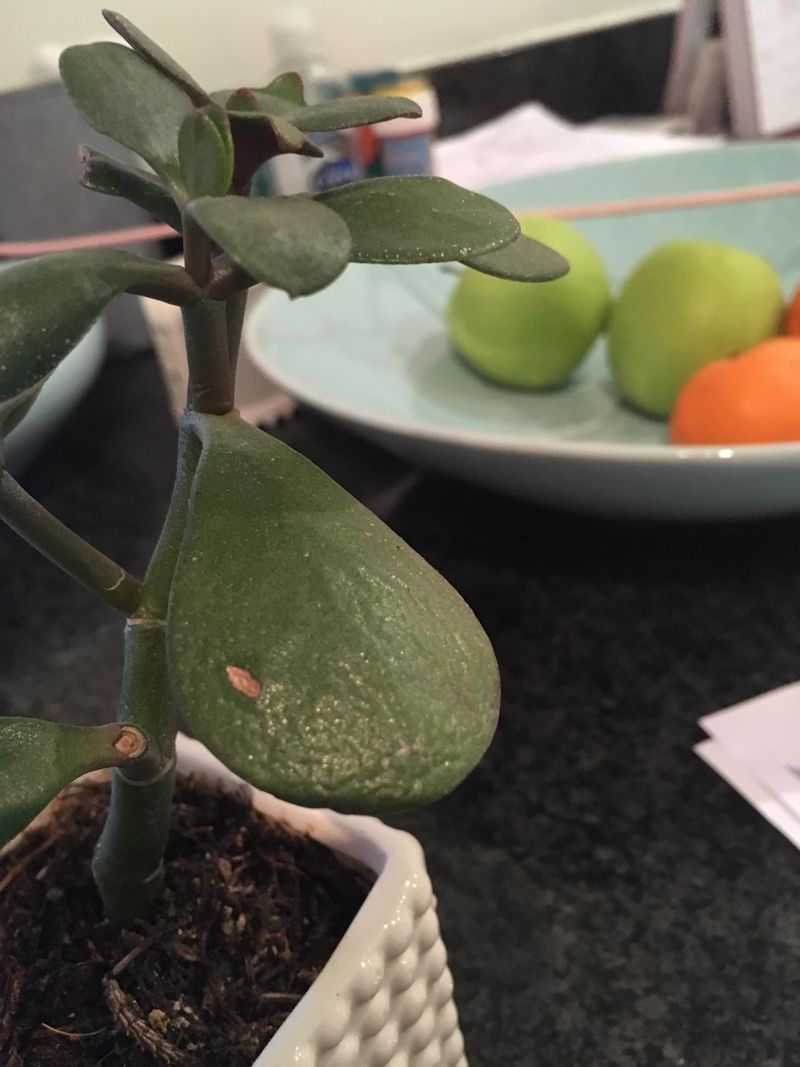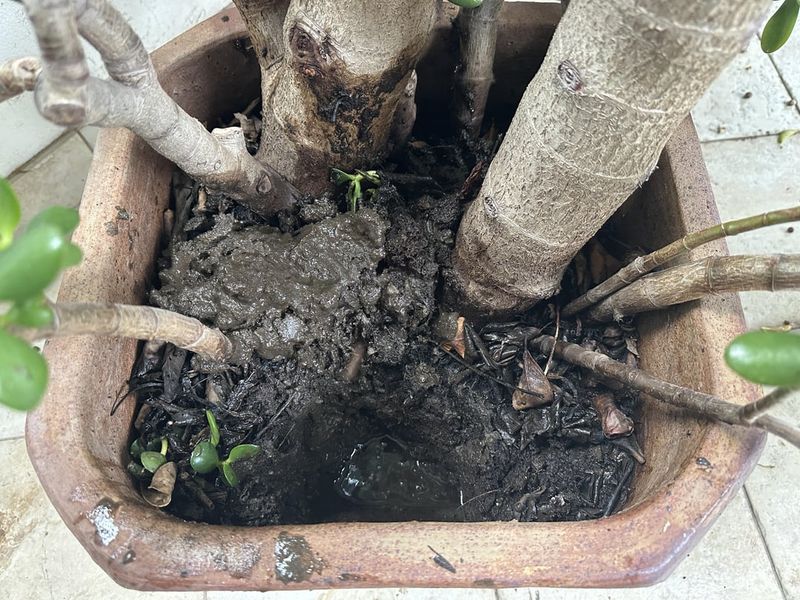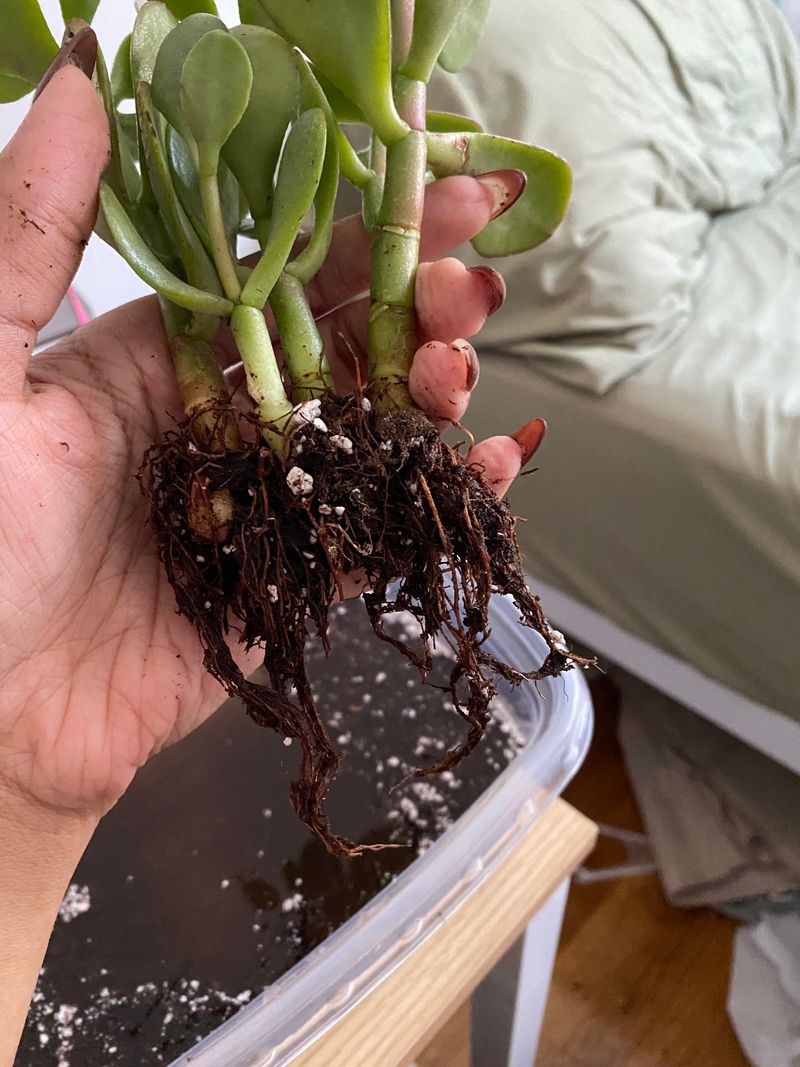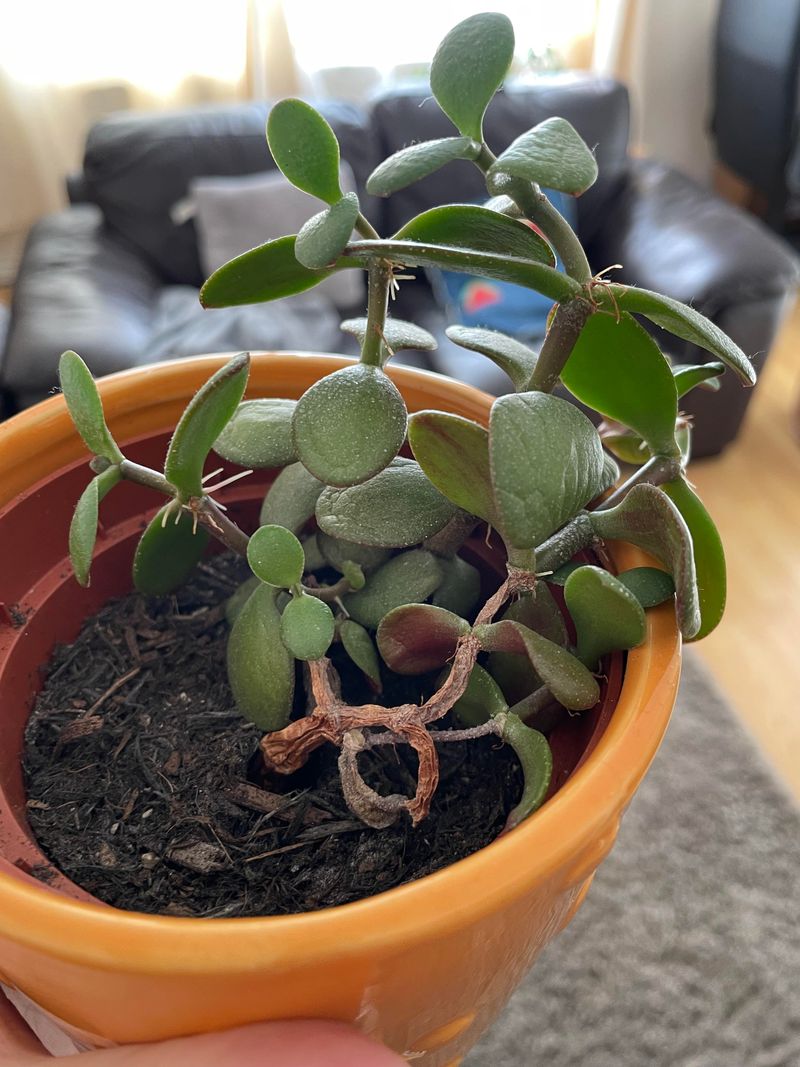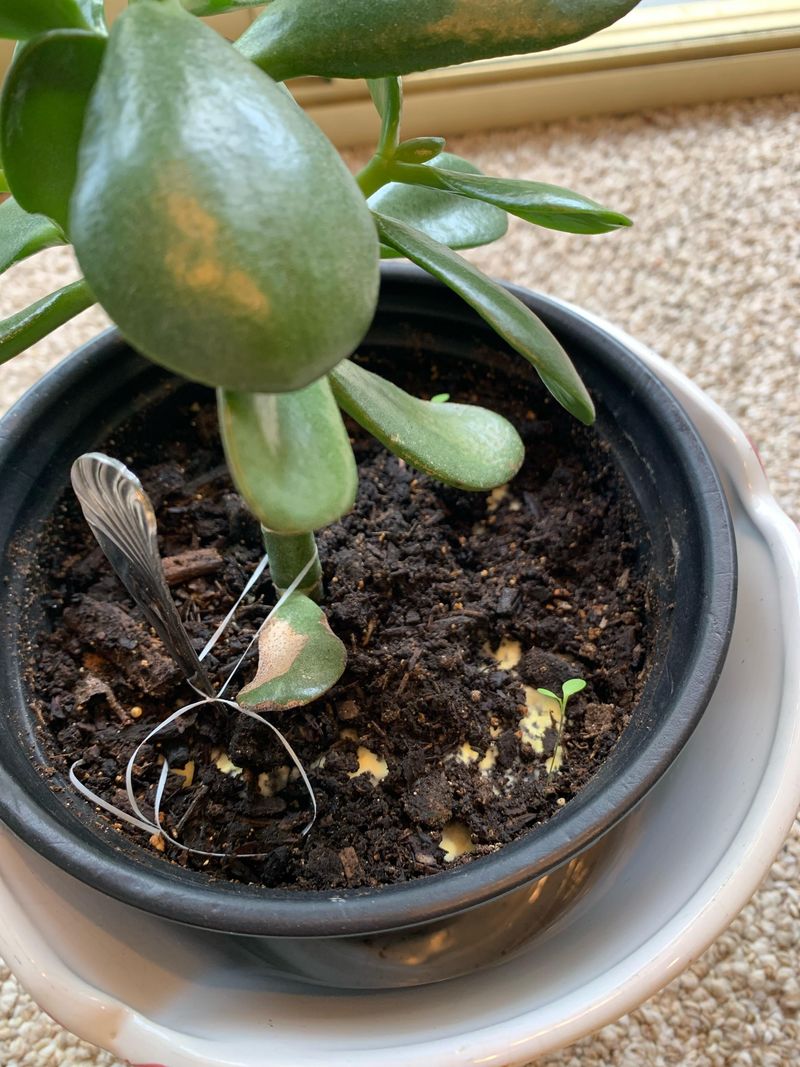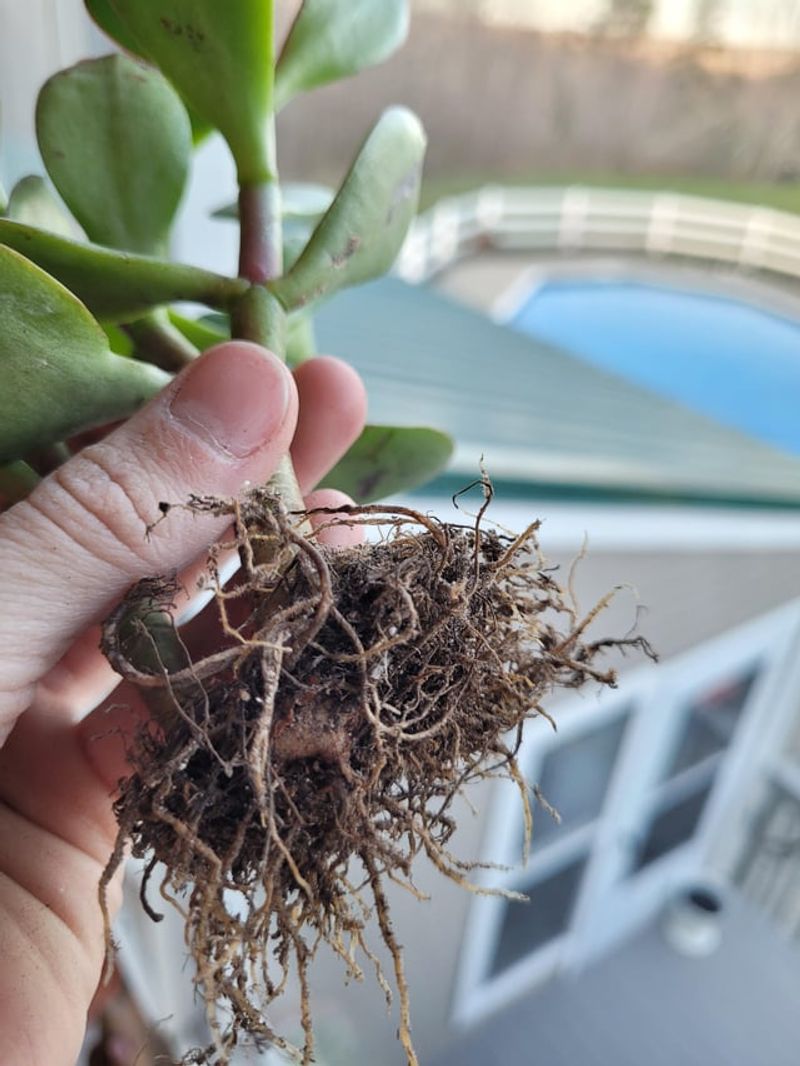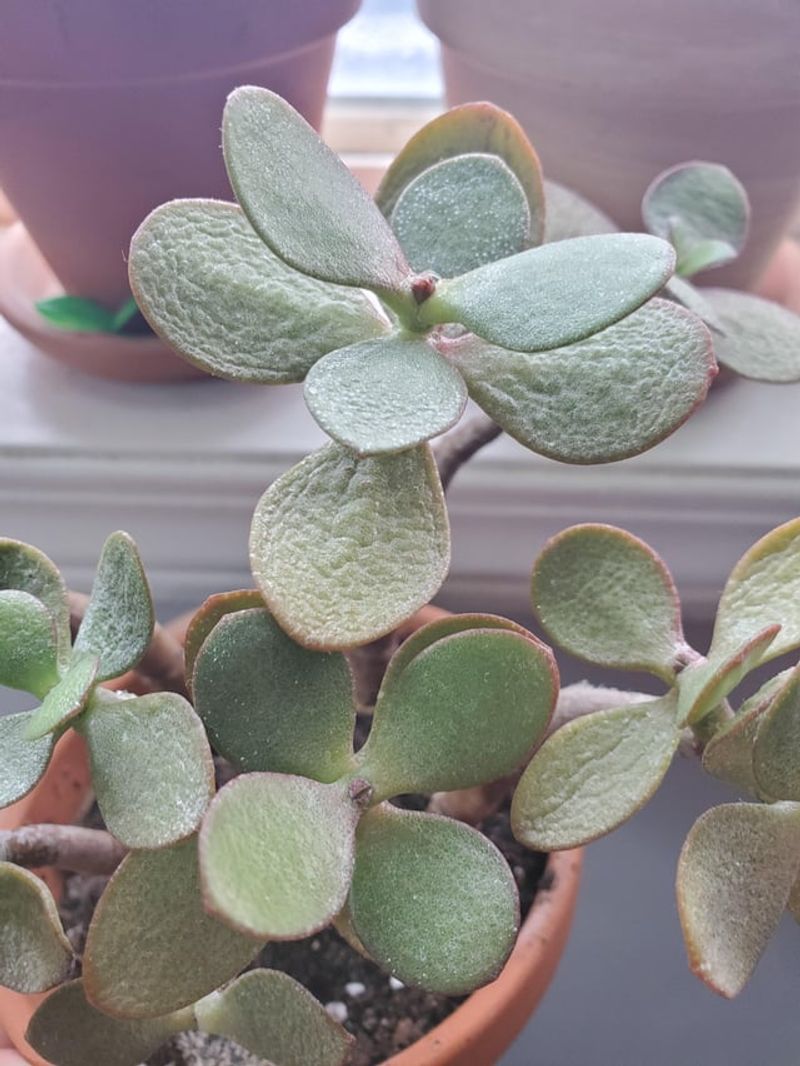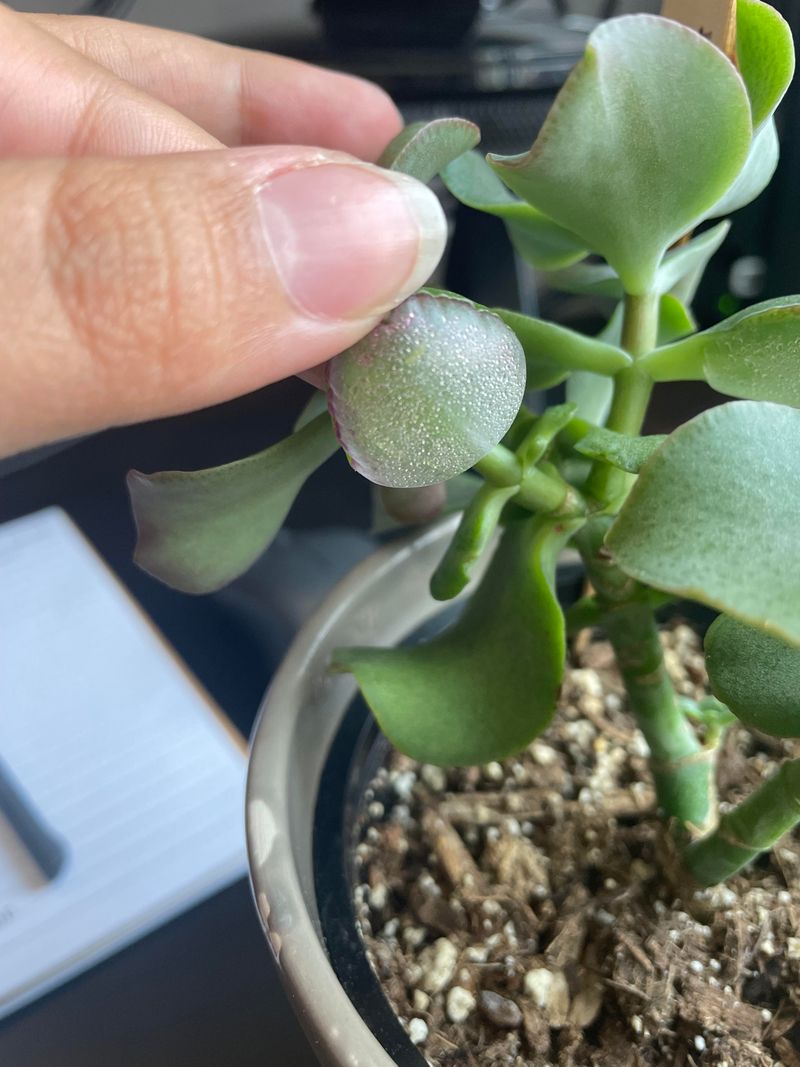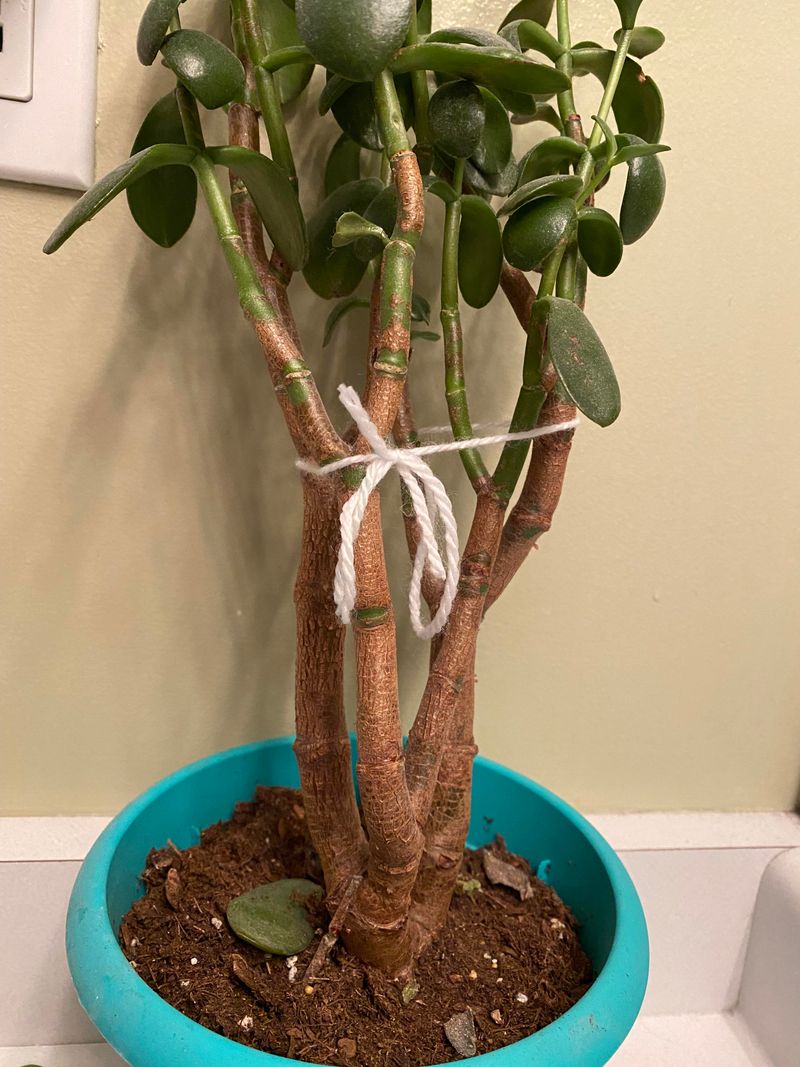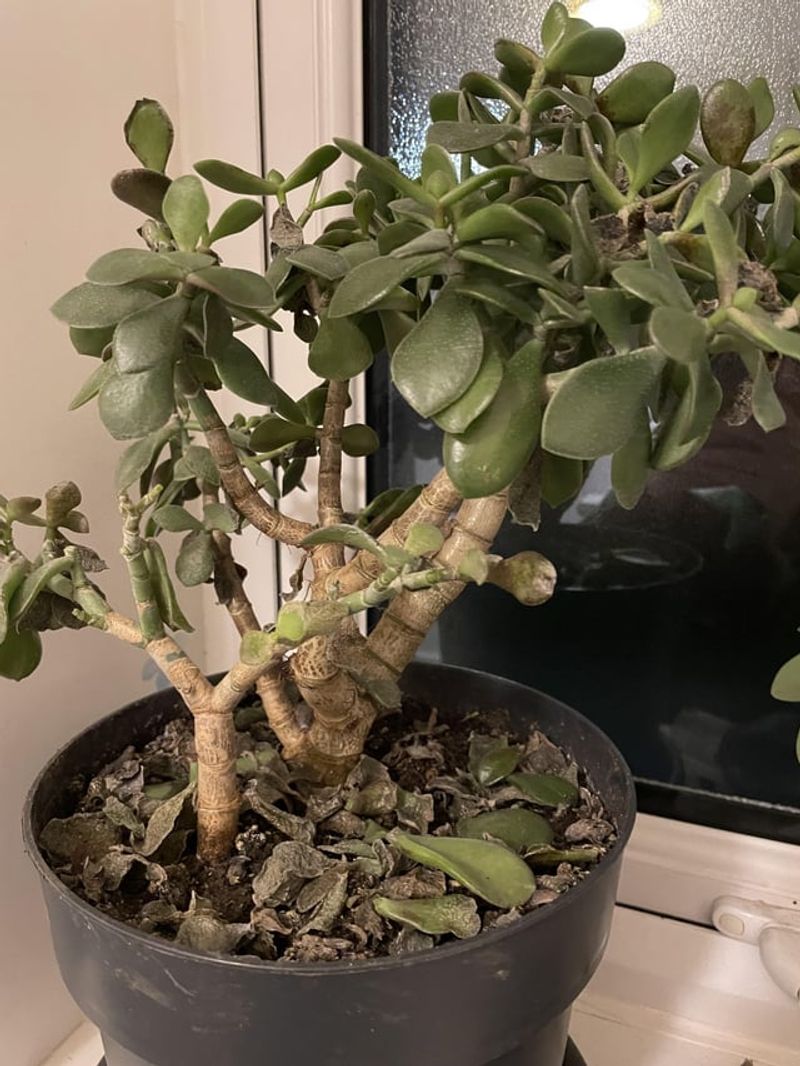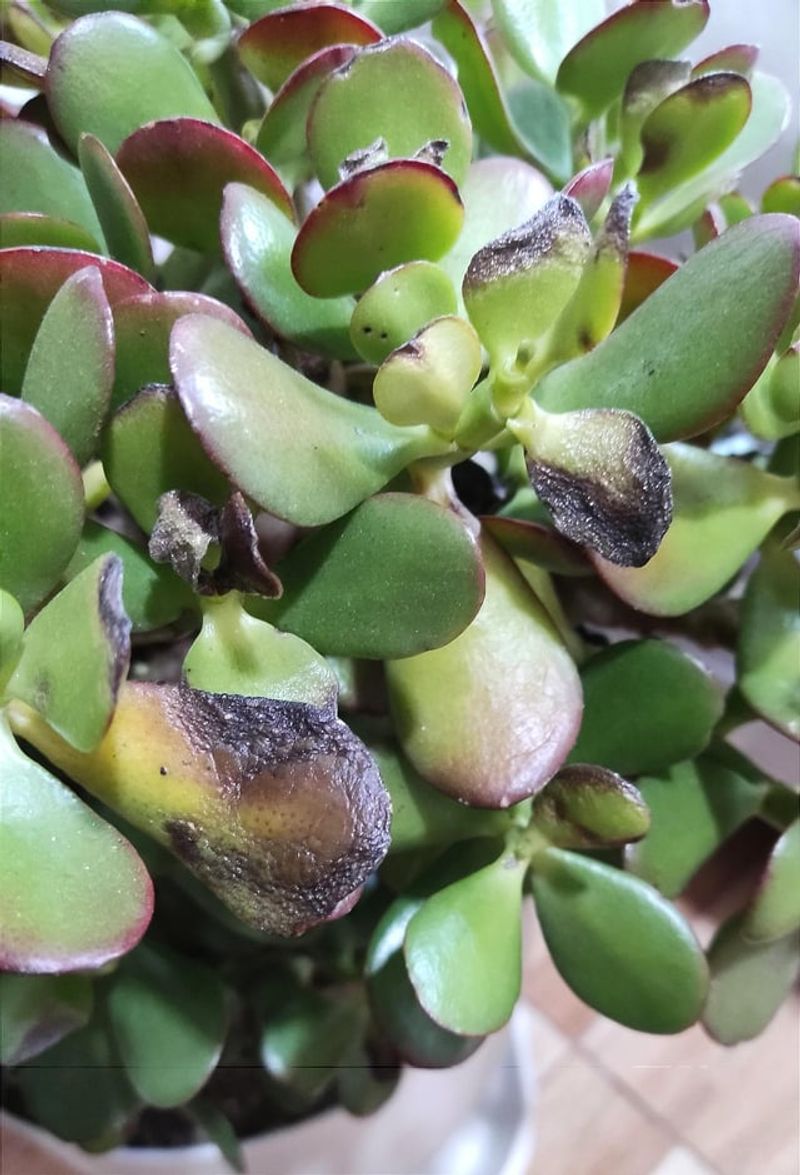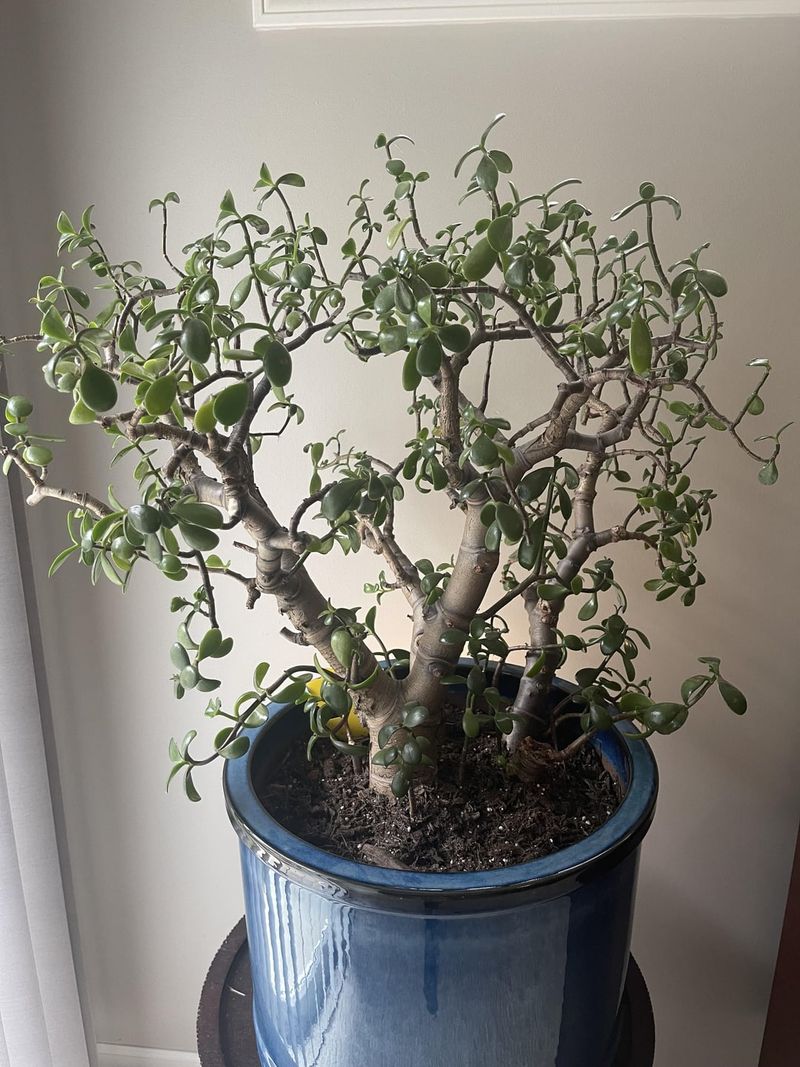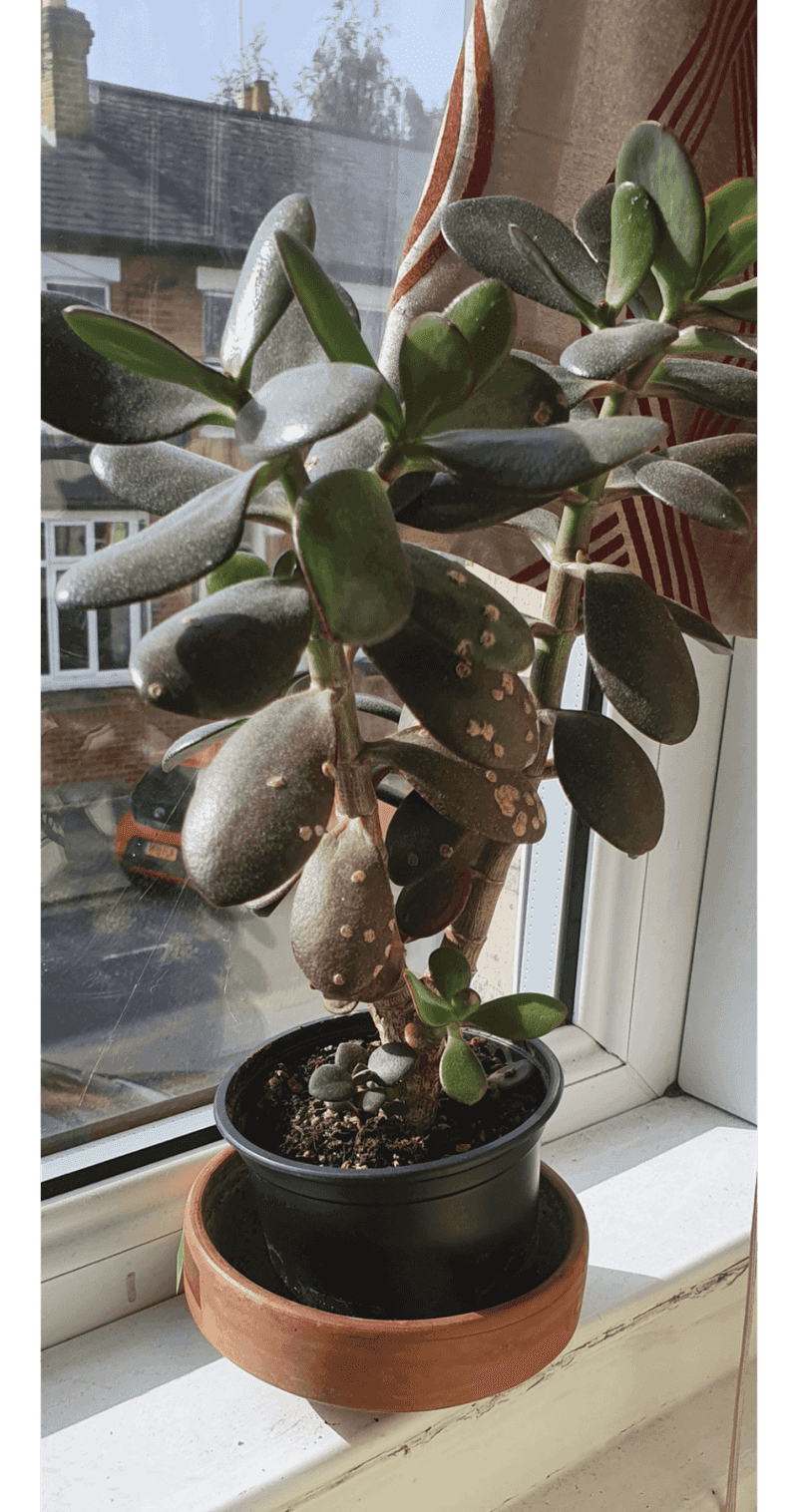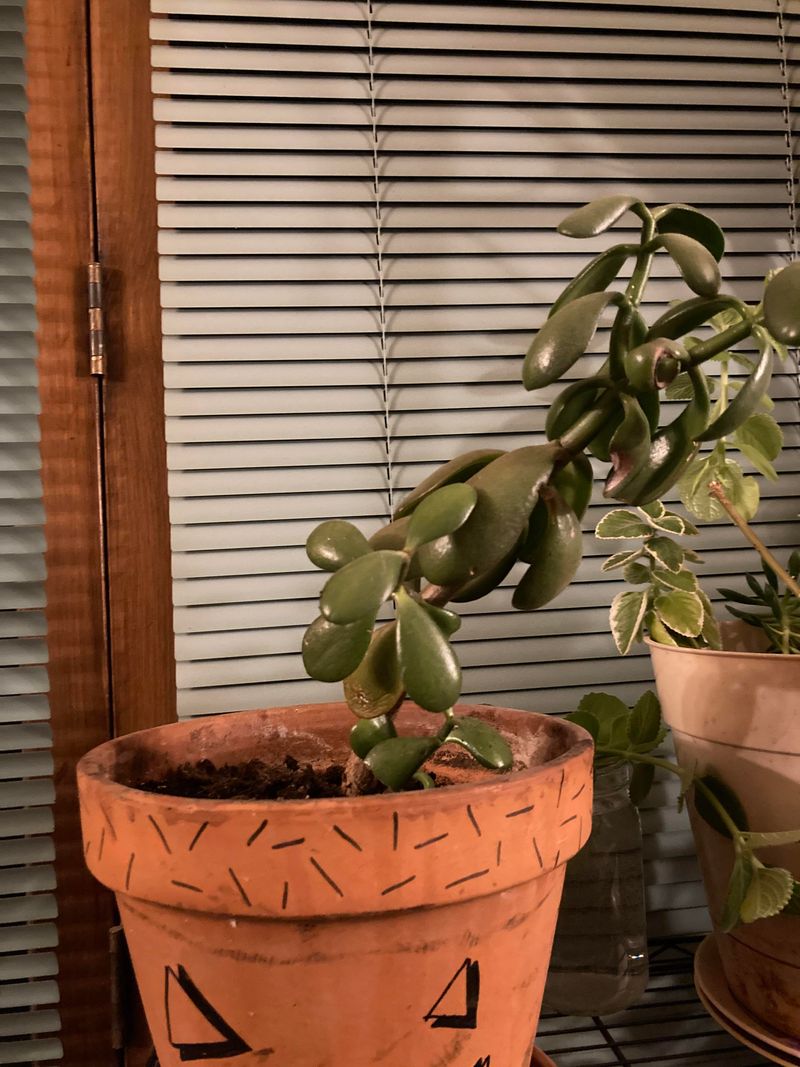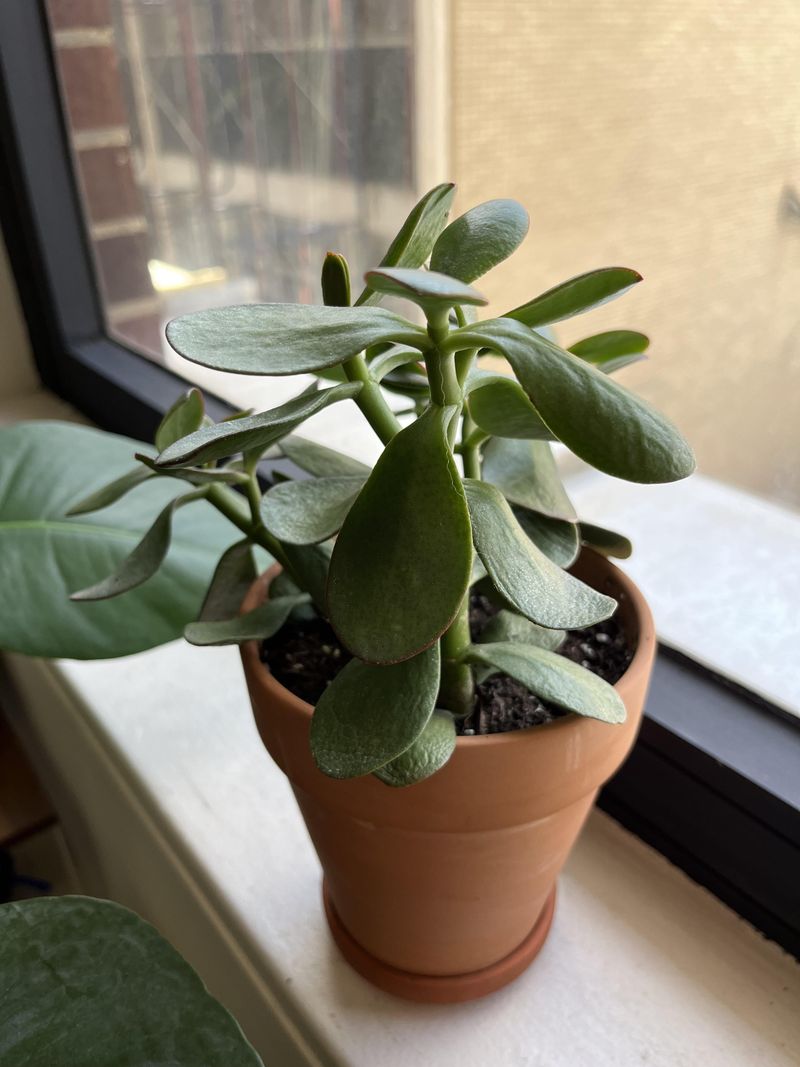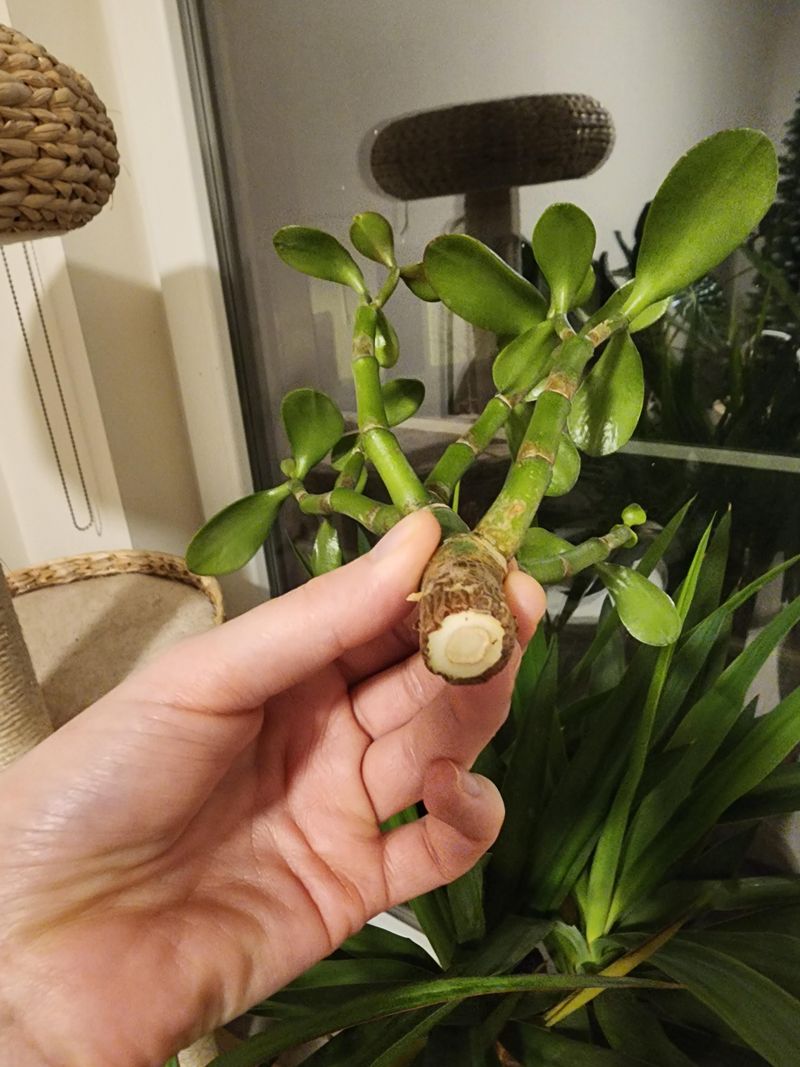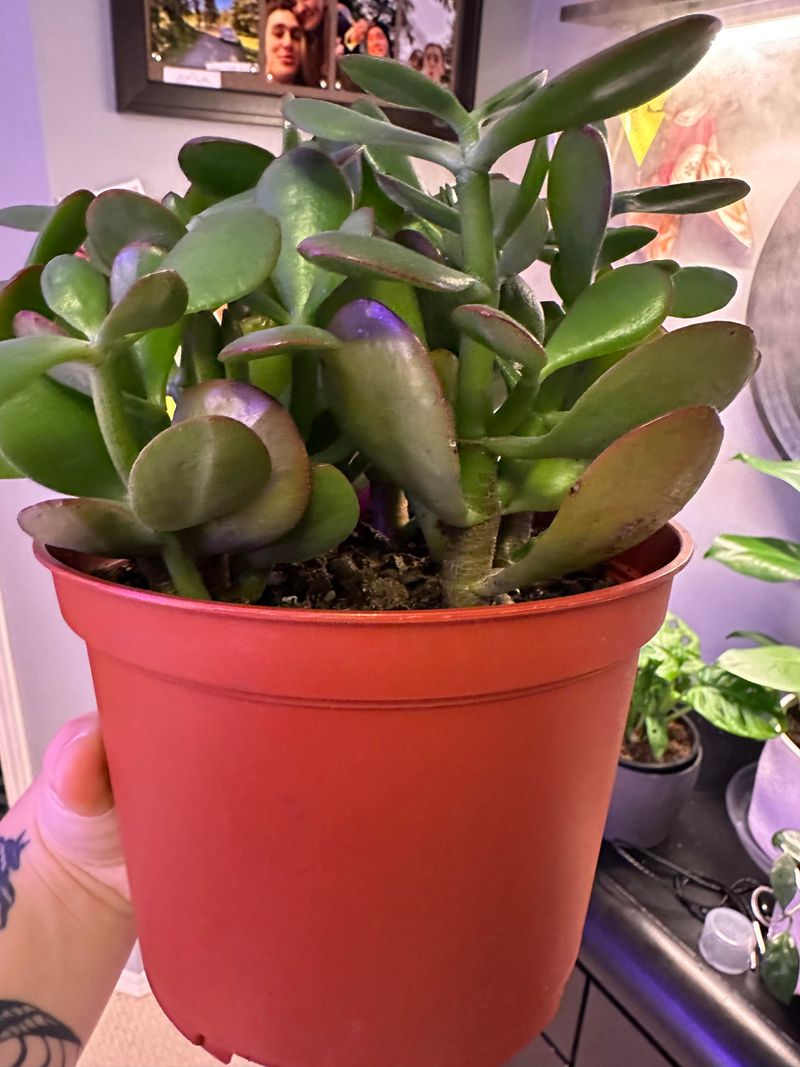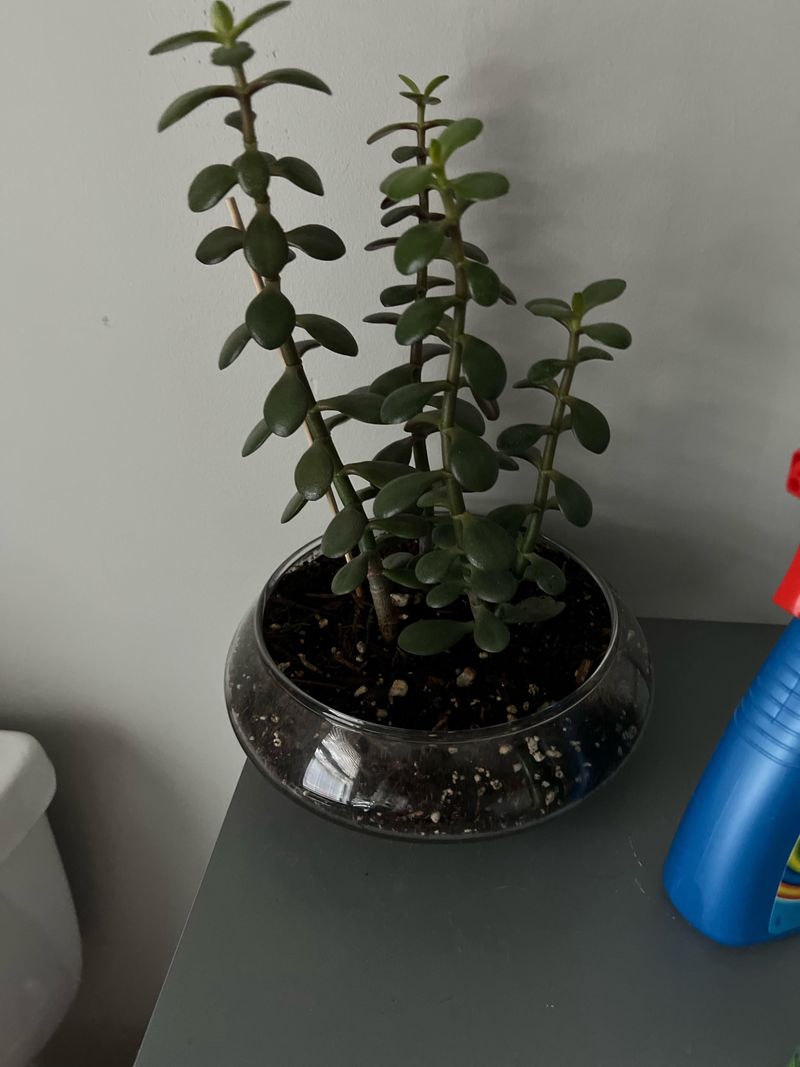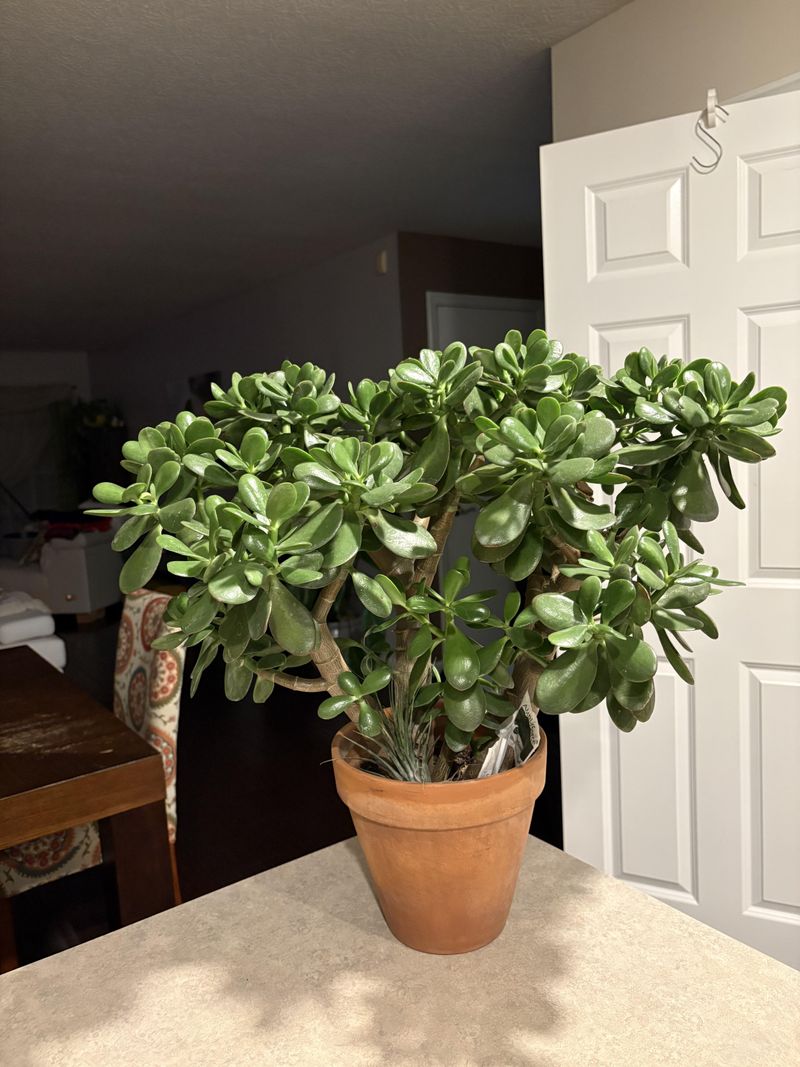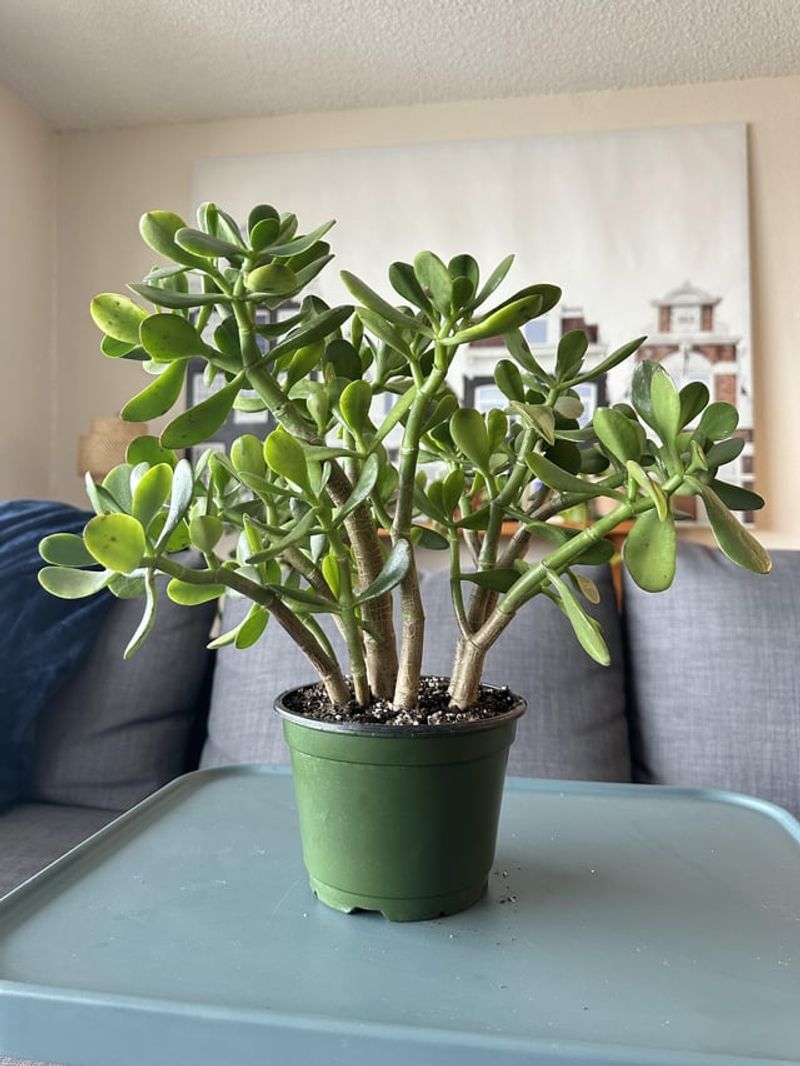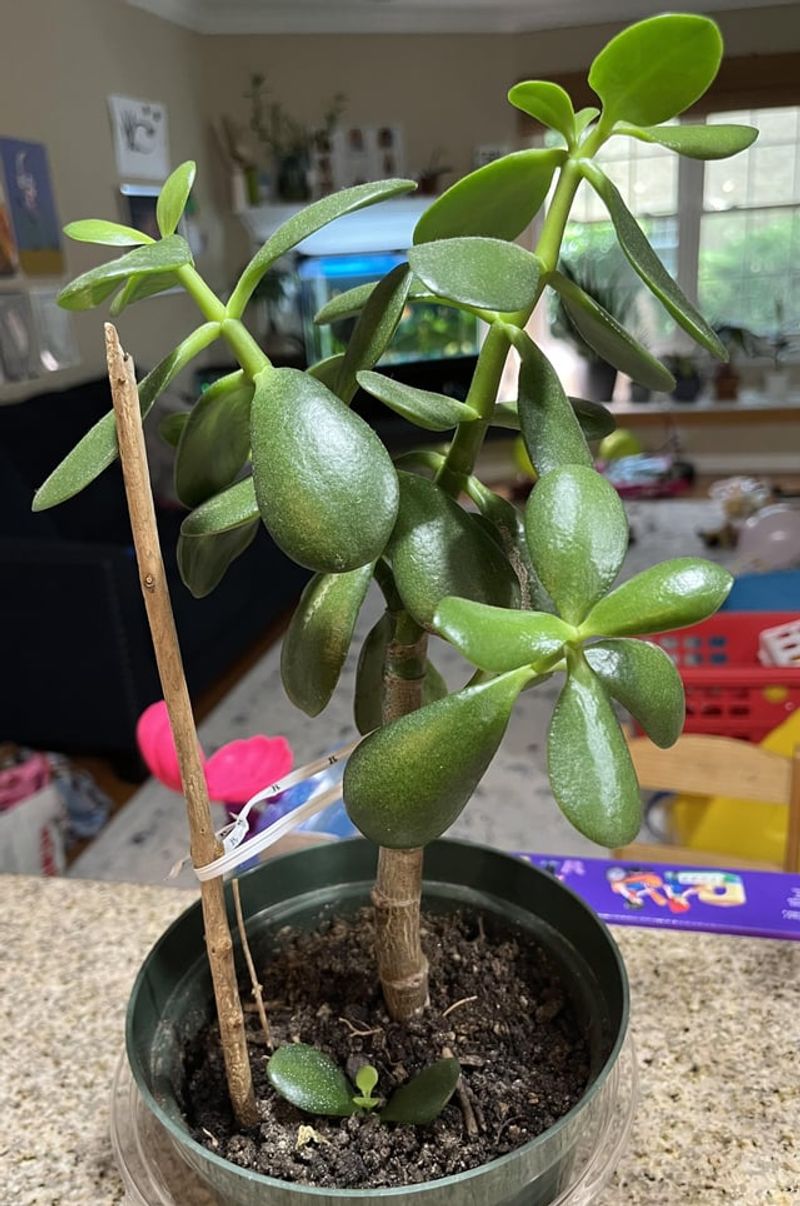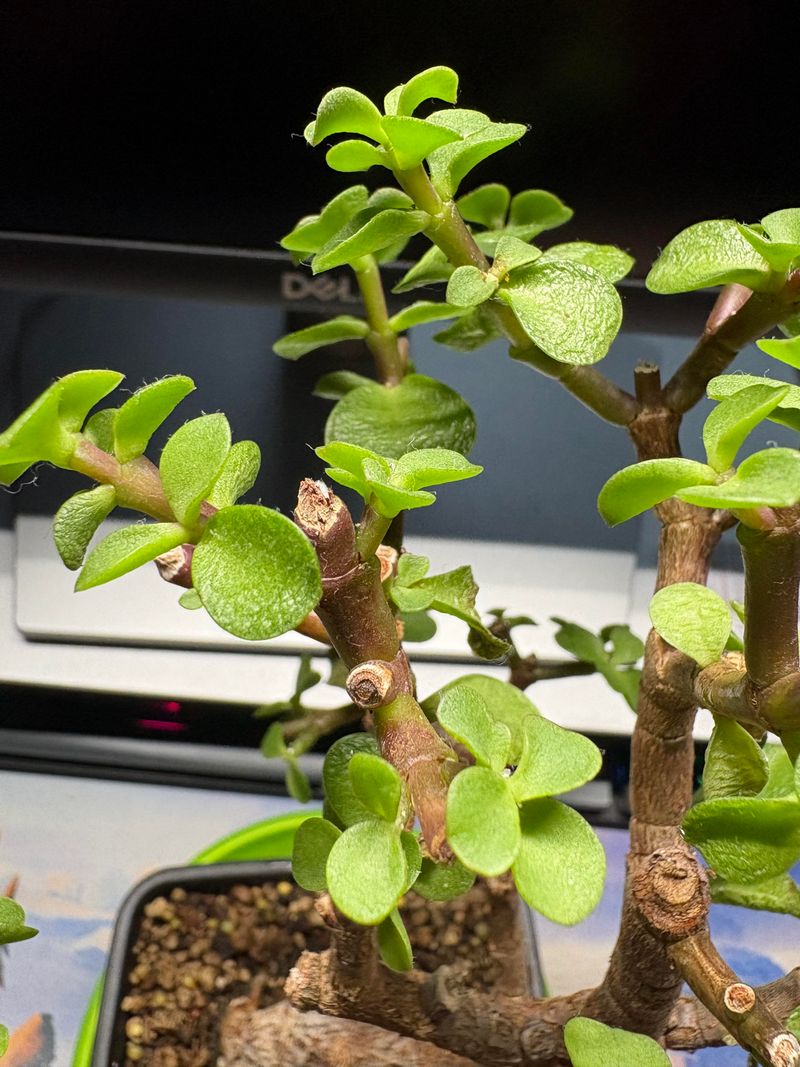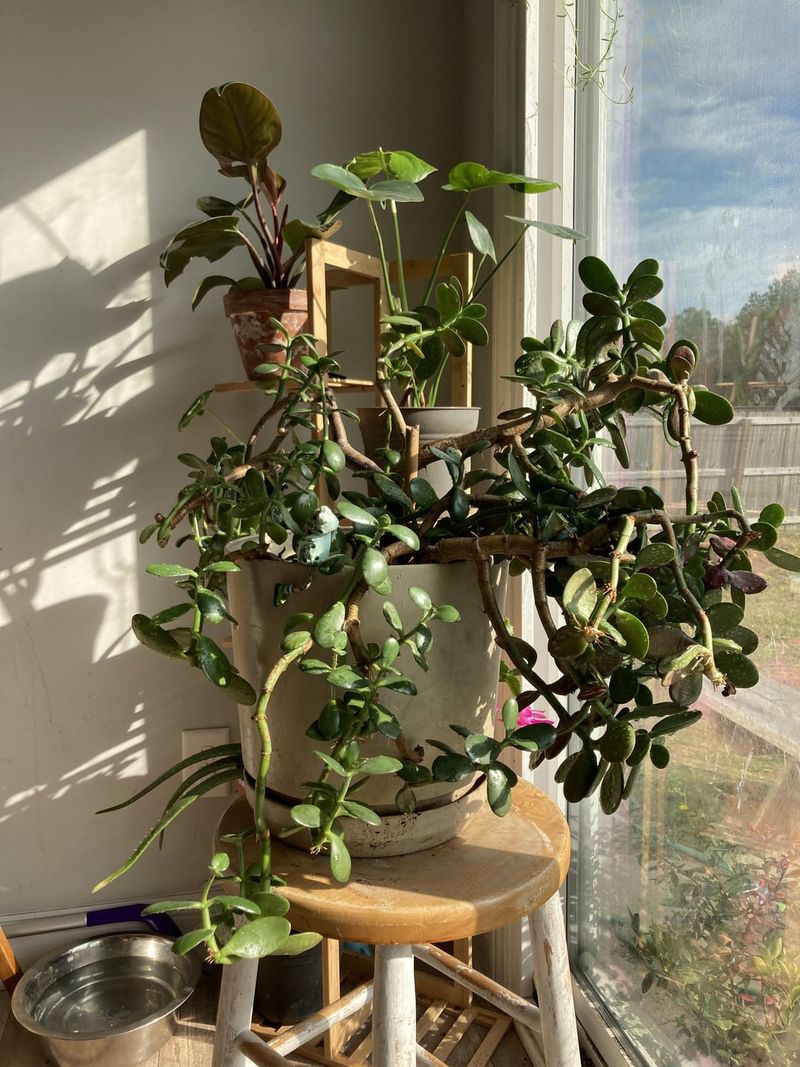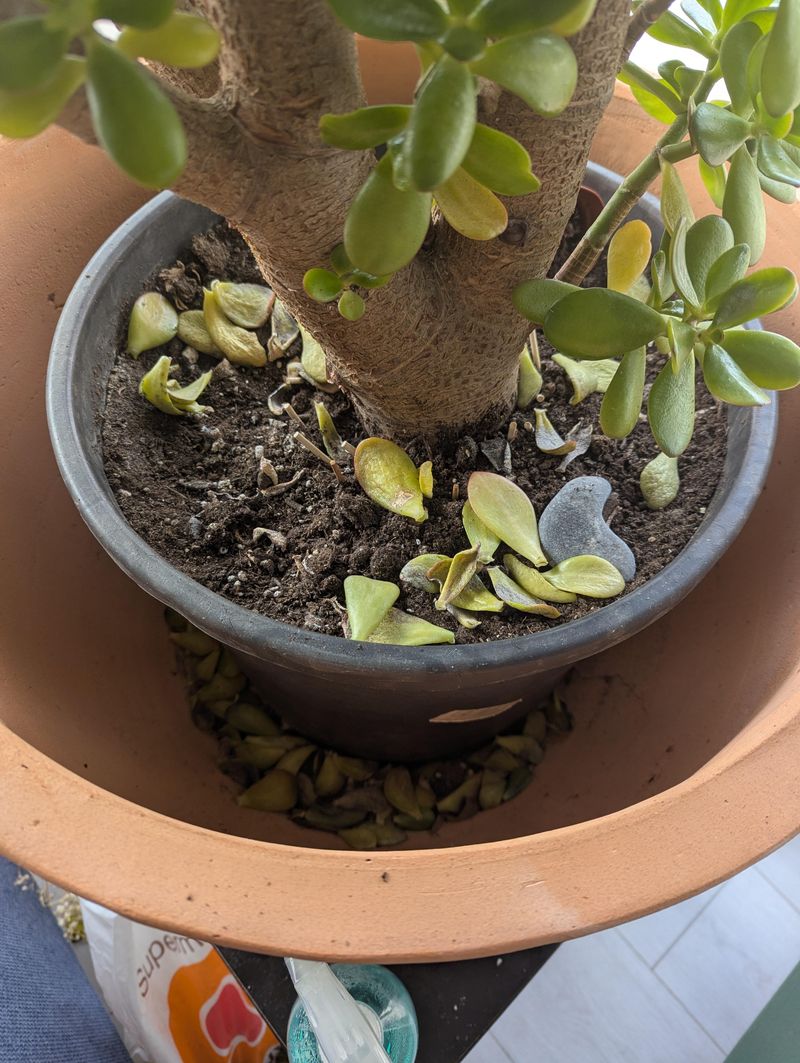Jade plants are beloved for their succulent leaves and tough, no-fuss nature, but even these hardy beauties can struggle if they’re loved a little too much. Especially when it comes to watering.
I’ve definitely been guilty of overwatering mine, only to wonder why it suddenly looked a little sad. Recognizing the signs of overwatering is key to nursing your jade plant back to health. Here are some of the signs that your plant might be getting too much water, along with simple, practical fixes.
A little adjustment can go a long way in keeping your jade plant happy. So, let’s decode what your plant is trying to tell you and make sure it stays healthy for years to come!
1. Soft And Mushy Leaves
Ever noticed how a jade plant’s leaves can turn into squishy blobs? That’s a classic sign of overwatering. These leaves should be firm and plump, not resembling jelly. When you touch them, they might leave you questioning your watering habits. It’s like the plant is quietly screaming, “Enough with the water!”
If your jade’s leaves are going squishy on you, it’s a direct plea to ease up on the watering can. These soft leaves can eventually lead to further complications if not addressed promptly, so take heed and let the soil dry out!
2. Yellowing Leaves
When jade leaves start turning yellow, it’s like they’re waving a yellow flag saying, “Help, we’re drowning!” Overwatering is often the culprit behind this early warning sign. The green that we all love slowly fades to a less appealing shade. The change can be subtle at first, leaving you second-guessing if you’ve imagined it. But, trust me, once you notice it, it’s hard to unsee. These yellow leaves are an early indicator that your jade plant is taking in more water than it can handle. Time to back off and let it dry out!
3. Leaves Dropping Off Easily
One day, I found my jade plant shedding leaves as if it were autumn. This unexpected leaf drop is a sure sign that something isn’t right. Overwatering causes roots to struggle and can’t provide enough support for the plant. It’s almost like the plant is trying to lighten its load to survive.
The process can be quite alarming, as one minute your plant looks full, and the next, it’s balding. Seeing those scattered leaves on the ground can be disheartening, but it’s a wake-up call to reevaluate your watering routine and give those roots a break.
4. Dark Or Black Spots On Leaves
Spots on your jade plant’s leaves that resemble ink blots might not be the artistic statement you were hoping for. These dark or black spots often signal a potential fungal infection, spurred on by overwatering.
It’s as if the plant’s leaves are developing freckles, but not the cute kind. These blemishes are a serious indication that moisture levels are providing a perfect playground for fungi.
It’s essential to act quickly to prevent these spots from spreading further. Consider adjusting your watering habits and ensuring proper airflow around your plant to combat this issue.
5. Wrinkled But Soft Leaves
You might think wrinkled leaves signal a thirsty plant, but when they’re also soft, it’s a different story. These wrinkled yet soft leaves are actually a cry for help due to waterlogged roots. It’s like having pruney fingers after staying in the water for too long.
This condition prevents the jade from absorbing necessary nutrients, leading to a sad, droopy look. The leaves may appear tired and deflated, a stark contrast to their usual vitality. It’s a signal to let the soil dry out completely before the next watering session to allow the plant to recover.
6. Wilting Despite Wet Soil
Ever found your jade plant looking all droopy, only to discover the soil is still wet? It’s like the plant’s having a meltdown despite being in a pool. This wilting in wet soil situation arises from oxygen deprivation in the roots.
The roots are practically suffocating from too much water, unable to perform their usual duties. It leaves you scratching your head, wondering what went wrong. This is a clear sign that your jade plant’s had enough of the waterworks and needs a break. Allowing the soil to dry out completely can breathe life back into your plant.
7. Mushy Or Rotting Stems
Stems that start going mushy or rotting isn’t a good look for any plant, let alone a jade. This is a red flag indicating that root rot might be spreading. It’s as though the plant’s skeleton is turning to mush, unable to support its structure. Such conditions signal that overwatering has led to dire consequences.
If left unchecked, this can spell disaster for your jade plant. The mushy stems are a plea for immediate action. Trimming away the affected areas and letting things dry out can help stop the rot from taking over completely.
8. Unpleasant Smell From The Soil
Have you ever sniffed your jade plant’s soil and regretted it? That foul odor is a dead giveaway that the roots are rotting. It’s like the soil has its own questionable perfume, and trust me, it’s not a scent you want lingering around.
I once experienced this with mine and immediately knew I had to take action. This unpleasant smell indicates that the roots are drowning, and immediate measures are needed. Repotting with fresh soil and ensuring proper drainage can help eliminate the stench and save your plant from further rot.
9. Soil Stays Wet For Too Long
Notice how your jade plant’s soil feels more like a swamp? If the soil stays wet too long, it signals poor drainage or excess watering, troubling signs for any plant. It’s like a constant bath that the roots can’t escape from, creating an unfavorable environment.
This prolonged wetness can lead to root rot and other problems, making it crucial to check your plant’s pot and soil. Ensuring the pot has drainage holes and using well-draining soil can help alleviate this issue. Letting the soil dry out between waterings is key to preventing this soggy situation.
10. Mold Or Fungus Growing On The Soil Surface
Spotting mold or fungus on your jade plant’s soil surface is like finding a surprise you never wanted. It means there’s excess moisture creating a breeding ground for these unwanted guests. Imagine your plant’s soil hosting a mini party that’s gone out of control! This isn’t just a nuisance. It’s a sign that conditions are too wet.
Addressing this by cutting back on water and improving airflow can help clear these freeloaders. It’s essential to keep the soil dry enough to deter these pesky growths. A little vigilance goes a long way in maintaining a healthy plant.
11. Roots Turning Brown Or Black
Have you ever checked your plant’s roots, only to find them resembling chocolate or coal? Brown or black roots are warning signs of root rot, usually caused by overwatering. It’s like finding out your plant’s lifeline is in serious trouble.
This discoloration indicates that the roots are struggling and need immediate attention. Your jade plant’s roots should be firm and white, not looking like they’ve been charred. Acting quickly by trimming the damaged roots and adjusting your watering routine can make a huge difference. It’s time to let the soil dry and give those roots a fighting chance!
12. Pale Or Faded Leaves
Ever noticed your jade plant sporting leaves that look more pastel than usual? Pale or faded leaves signal that nutrient absorption is being hampered, often due to overwatering. These leaves lose their normal hue, turning into a dull version of their former selves.
It’s as if they’re wearing a permanent filter that mutes their true colors. This condition is a wake-up call to reevaluate your watering habits. Allowing the soil to dry out and ensuring the plant gets enough light can help restore its natural vibrance. Don’t let these faded leaves become the new norm!
13. Swollen, Bloated Leaves
You might think swollen leaves are a sign of a well-hydrated plant, but not when they’re bloated like balloons. These plump leaves are actually holding too much water, a clear sign of overwatering. It’s like the plant’s indulged in an all-you-can-drink buffet and needs to cut back.
I once noticed this with my jade, and it looked like the leaves might burst from being overfilled. The solution? Allow the soil to dry out more thoroughly between waterings. This bloated condition can lead to other issues if not addressed, so moderation is key!
14. Stems Becoming Soft And Weak
Ever touched your jade plant’s stem and felt it give way under your fingers? Soft and weak stems are telltale signs of structural damage due to rot, often from overwatering. It’s as if the plant has lost its backbone, becoming a floppy shadow of its former self.
This weakening can spell trouble if not addressed promptly. Taking action by adjusting your watering schedule and trimming affected parts can help reinforce the plant’s structure. It’s crucial to let the soil dry out and provide a bit of TLC to bring back its strength.
15. New Growth Appearing Weak Or Discolored
Ever been excited about new growth on your jade plant only to find it looking like it needs a pick-me-up? Weak or discolored new growth can indicate water stress affecting the plant’s development. It’s like the plant’s trying to grow but isn’t quite getting the support it needs.
As frustrating as this can be, it’s important to reevaluate your watering routine. Perhaps your plant’s telling you it’s had enough of the waterworks. Letting the soil dry out between waterings and ensuring adequate light can help new growth flourish. It’s all about finding that balance!
16. Brown Leaf Edges
Ever spotted your jade plant’s leaves with edges that look like they’ve been singed? Brown leaf edges are often a result of root damage from prolonged overwatering. It’s as if the leaves are waving little brown flags indicating distress.
This condition can be alarming, but it’s an opportunity to reassess how often you’re reaching for that watering can. Allowing the soil to dry out more thoroughly and checking the pot’s drainage can help prevent this issue. With a little care, you can bring those leaves back to their former glory!
17. Lack Of New Growth
Ever wondered why your jade plant seems to be stuck in a growth rut? A lack of new growth can signal that overwatered roots are struggling to support the plant. It’s like the plant’s hit pause on its development until it gets a breather. This stagnation can be disheartening, as we all want to see our plants thriving.
It’s crucial to let the soil dry completely between waterings to help reinvigorate growth. Providing adequate light and proper soil conditions can also make a big difference. Remember, patience and care go a long way in nurturing new growth!
18. Pests Like Fungus Gnats
Ever had unwanted guests buzzing around your jade plant? Fungus gnats are often attracted to the constantly damp soil, making them a nuisance. It’s like the plant’s hosting a party you never invited them to. I once dealt with these pesky critters and realized it was a direct result of overwatering.
These pests are drawn to the moist conditions, further stressing out your plant. Cutting back on watering and allowing the soil to dry out can discourage these gnats from hanging around. A little vigilance can help keep your jade plant pest-free!
19. Sudden Leaf Transparency
Have you ever looked at your jade plant and noticed some leaves looking like stained glass? Sudden leaf transparency is a sign that cells are breaking down due to excess moisture. It’s like the plant’s showing its inner self, but not in a good way.
This transparency indicates that overwatering is causing internal damage. Acting quickly by adjusting your watering habits and letting the soil dry can help reverse this condition. Ensuring proper light and airflow can also aid in recovery. Don’t let this transparency become a permanent feature of your jade plant!
20. Plant Leaning Or Collapsing
Ever found your jade plant doing the limbo, leaning over like it’s had a rough day? This leaning or collapsing behavior is a sign that the roots are too weak to support the plant. It’s like the plant’s trying to take a nap when it should be standing tall.
This could result from overwatering weakening the root structure. Taking steps to let the soil dry out and ensuring the plant has proper support can help it regain its posture. Sometimes, repotting with fresh, well-draining soil can also make a world of difference. It’s about getting your plant back on its feet!
21. Stop Watering Immediately
Got a jade plant drowning in too much water? The first step in rescuing it is to stop watering immediately. It’s like hitting the pause button on a bad habit. By allowing the soil to dry out completely, you give the plant a chance to breathe and recover.
This break from watering is crucial in preventing further damage. It’s all about giving the plant room to dry out and regain its strength. Once the soil is dry, you can reassess your watering schedule. This simple step can be a game changer in reviving an overwatered jade plant.
22. Check The Roots
When your jade plant’s had too much water, checking the roots is a vital next step. It’s like doing a health checkup, and the roots will tell you the plant’s story. By examining them, you can spot any rotten or blackened parts. This allows you to trim away the damaged areas and prevent the rot from spreading.
By taking this action, you help your jade plant recover and thrive. A little root inspection goes a long way in nurturing your plant back to health. This hands-on approach can make a world of difference in saving your jade from overwatering woes.
23. Repot With Fresh, Well-Draining Soil
Repotting your jade plant with fresh, well-draining soil is like giving it a new lease on life. This step helps prevent future water retention and encourages healthy growth. By providing a better environment, you’re setting the stage for recovery.
It’s essential to choose soil that’s right for succulents, ensuring proper drainage. This fresh start can help alleviate the effects of overwatering. A little effort in repotting can help your jade plant thrive once more. If you’ve ever felt the need to refresh your plant’s surroundings, this is the perfect opportunity!
24. Use A Pot With Drainage Holes
Ever wondered if your pot’s doing its job? Using a pot with drainage holes is key to avoiding water accumulation. These holes are like little escape routes for excess water, preventing your jade plant from drowning in its own pot. It’s like giving the plant a pair of rain boots to weather the storm.
Ensuring proper drainage can make a world of difference in maintaining the right moisture balance. This simple change can help prevent overwatering issues and lead to happier, healthier plants. Sometimes, it’s the little things that make a big impact!
25. Place The Plant In Bright, Indirect Light
Positioning your jade plant in bright, indirect light is crucial for its recovery. It’s like giving the plant a cozy spot to soak up some rays without getting sunburned. This lighting helps the plant recover faster by encouraging healthy growth.
The right light can make a noticeable difference in your plant’s overall well-being. By providing this ideal environment, you’re helping your jade plant bounce back from overwatering troubles. Just a little adjustment in lighting can work wonders in restoring your plant’s vitality.
26. Increase Airflow Around The Plant
Improving airflow around your jade plant is like giving it a breath of fresh air. This helps speed up soil drying and prevents moisture buildup. By enhancing ventilation, you’re creating an environment that discourages rot and fungal growth. It’s a simple yet effective way to combat overwatering issues.
Opening windows or using a fan can make a noticeable difference in your plant’s recovery. Increased airflow is a vital step in ensuring your jade plant thrives. Sometimes, a little breeze is all it takes to bring your plant back to life!
27. Water Only When The Soil Is Completely Dry
To mimic its natural habitat, water your jade plant only when the soil is completely dry. It’s like following the plant’s rhythm and respecting its unique needs. By waiting for the soil to dry, you’re preventing overwatering and creating a healthier environment.
This approach helps your plant thrive and avoids the pitfalls of too much moisture. It’s all about finding the right balance and understanding what your plant truly needs. By adopting this watering method, you’re giving your jade plant the best chance to flourish.
28. Switch To The ‘Soak And Dry’ Method
Switching to the ‘soak and dry’ method is a game-changer for jade plant care. This approach prevents overwatering by allowing the soil to dry out completely between waterings. It’s like giving the plant a feast followed by a fast, mimicking its natural conditions.
By soaking the soil thoroughly and then letting it dry, you’re promoting healthier root development. This method helps prevent root rot and other moisture-related problems. Embracing this watering style can lead to happier, more resilient plants. Sometimes, a little change in routine makes all the difference!
29. Avoid Misting The Leaves
Jade plants prefer dry conditions, so misting the leaves is a no-go. It’s like trying to give a cat a bath—unwanted and unnecessary. This succulent thrives in arid environments, and introducing extra moisture can lead to problems.
By avoiding misting, you’re creating conditions that help your plant flourish.
It’s a simple yet effective way to ensure your jade plant stays healthy. Keeping the leaves dry can prevent common issues related to overwatering. Remember, less is more when it comes to moisture for jade plants!
30. Monitor For Further Signs Of Rot
Keeping a watchful eye on your jade plant is crucial, especially after episodes of overwatering. It’s like being a detective, searching for clues that might spell trouble. Monitoring for signs of rot helps you act quickly if symptoms persist. By staying vigilant, you can catch issues early and take preventive measures.
Regular checks ensure your plant continues to thrive and recover from past overwatering. Being proactive in your plant care routine can make a significant difference in its health. It’s all about being attentive and responsive to your plant’s needs!


